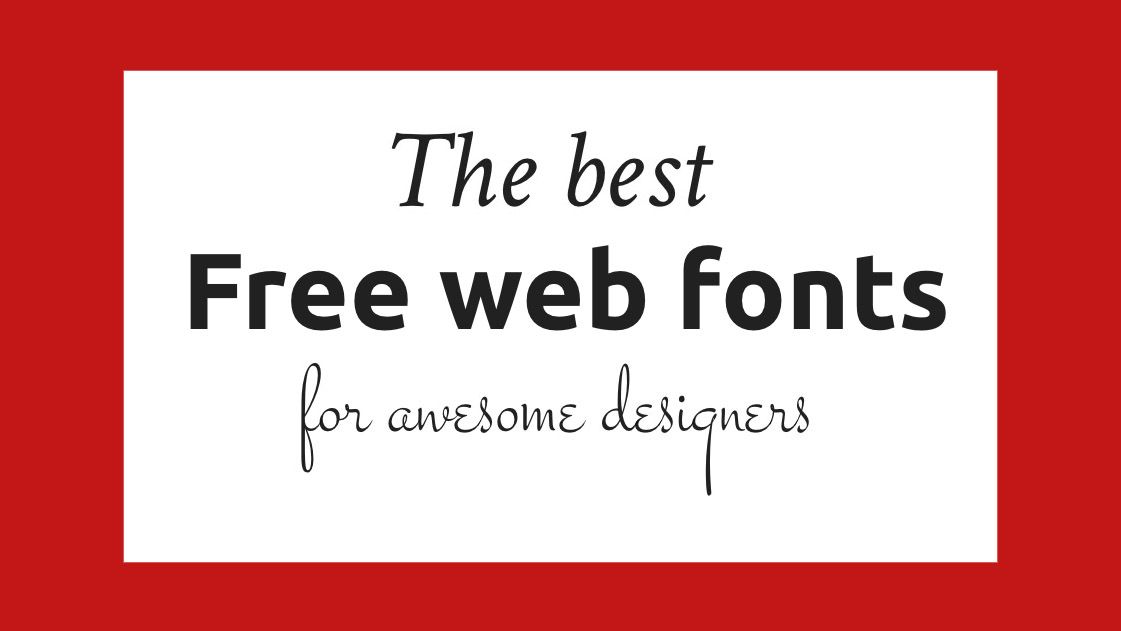

- #FREE WEBFONT GENERATOR HOW TO#
- #FREE WEBFONT GENERATOR SOFTWARE#
- #FREE WEBFONT GENERATOR CODE#
- #FREE WEBFONT GENERATOR LICENSE#
In the event that a particular user’s browser does not have the custom font on their browser, the fallback font will load in its place. Fall Back FontsĪ fallback font is specified as a backup font to ensure compatibility between browsers. Often the WOFF font format (and the newer WOFF2) is a bit difficult to come by, in which case the OTF and TTF formats are suggested for best practice.įor much more in-depth explanations of font formats, have a read-through of these posts by W3 Schools and Creative Market. The most widely accepted font format is the WOFF (Web Open Font Format), but again, it is unsupported by earlier versions of IE. To accommodate for this, the font format EOT (Embedded Open Type) is used explicitly for IE versions 6.0 and above. Support for the TTF and OTF format is pretty much widespread across the browsers, with the exception of Internet Explorer below version 9.0. TTF (TrueType Font) and its evolutionary counterpart OTF (OpenType Font) are the most common font formats specified. Understanding Font Formatsįonts come in an array of formats, all of which have been created to serve different browsers.
#FREE WEBFONT GENERATOR LICENSE#
When you begin the process of integrating custom fonts for a website, make 100% certain that you’re not using a desktop font by mistake, and that you are in possession of the appropriate license (either paid or free for use in specific instances) that suits your specific needs. To use custom fonts in both environments, separate licenses must be purchased, either per font family or for individual font subsets. Often license agreements are issued for use either in print or the web, not both. The licensing between desktop and web fonts differs. Web fonts are designed with subtle nuances in character makeup (spacing, contrast etc.), all which aim to optimize and enhance the font’s readability on screens, particularly at smaller font sizes.
#FREE WEBFONT GENERATOR SOFTWARE#
While desktop fonts are designed to be installed on a computer for use in Office, Adobe or similar software to create traditionally print-based assets, web fonts are designed specifically for use in web pages in accordance with specific standards to ensure browser compatibility. While seemingly similar, there are differences between desktop and web fonts both in application, appearance and licensing.

What Is The Difference Between a Desktop Font and A Web Font? For a thorough breakdown of typographical terminology, read this blog post from Elegant Themes.

In this section, we’ll be discussing a few type-related principles that are likely to have an effect on your web development practices. Understanding Typography And Its Role In Modern Web Design

Otherwise, click here to jump straight to the tutorial. If you’re interested in reading about the differences between desktop and web fonts, as well as understanding a bit more about font formats, scroll down.
#FREE WEBFONT GENERATOR HOW TO#
How to add Divi theme fonts via the server and referencing them through the stylesheet.How to add Divi custom fonts using the Divi Builder.Various typography terms and rules such as fallback fonts, font formats, font conversions and more,.If you don’t have a child theme, you can create one in just a few seconds with the Divi Space child theme generator.
#FREE WEBFONT GENERATOR CODE#
It can be done by uploading a font directly to the builder or by uploading a custom font to your website’s server and making use of the CSS3 property within your website’s stylesheet.įor this tutorial, you’ll need to access your website’s child theme, and add custom fonts to the theme directory, as well as edit code in the style.css file. A great way to achieve a truly unique look and feel for a website is by adding custom fonts to the Divi theme.Īdding custom fonts to your WordPress and Divi website is relatively easy. Typography has a strong effect on the overall aesthetic of a website and has tremendous power in expressing the tone of a brand or business.


 0 kommentar(er)
0 kommentar(er)
